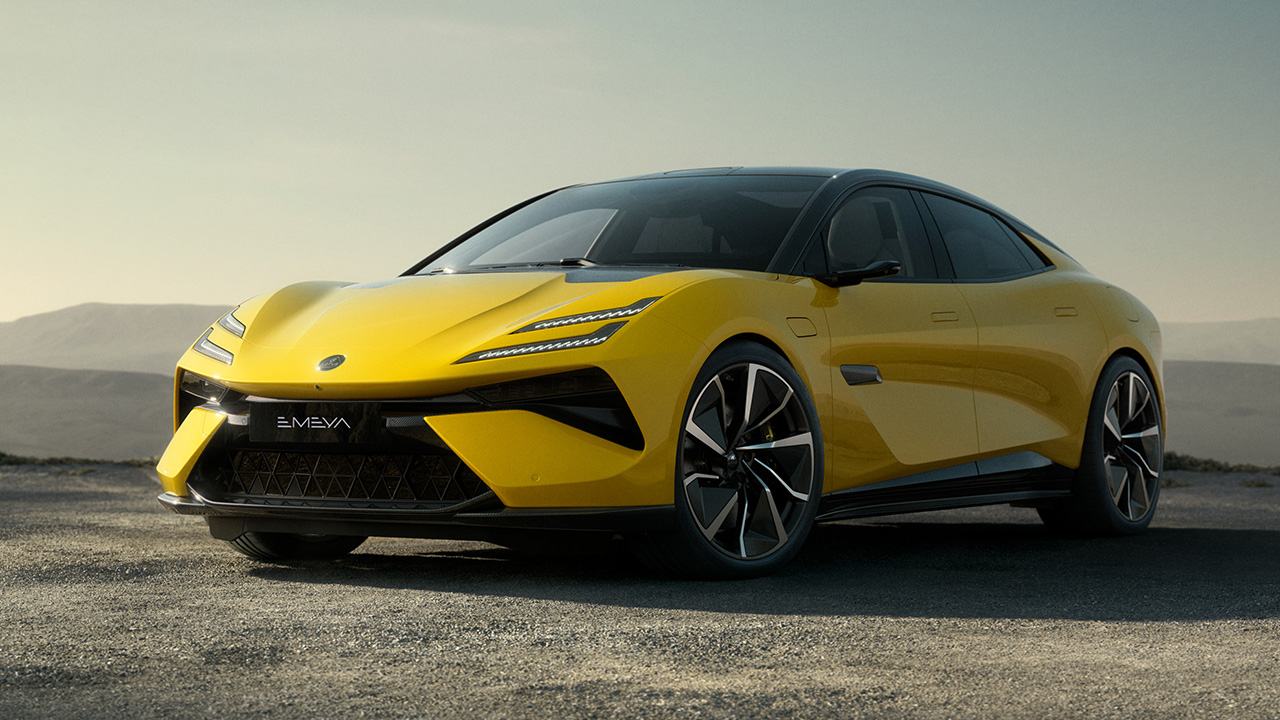Front and center in the Emeya's design is its aerodynamic engineering. It includes an active grille at the front, initially showcased on the Eletre SUV, which minimizes drag for better efficiency when shut and allows for battery and brake cooling when open. It also features an active front lip, an auto-adjusting rear diffuser, and a dynamic rear wing to optimize downforce during spirited driving and on racetracks. The rear wing measures 11.0 inches (27.94 cm) across, which is 3.9 inches (9.9 cm) more than its counterpart on the Eletre, and produces a total downforce of 474 pounds (215 kg) at an unmentioned speed.
Inside the Emeya, environmentally-friendly materials are a focus. Lotus becomes the first automaker to use an innovative yarn type for the passenger cabin. This yarn is made from recycled cotton waste from the fashion sector, offering a lighter alternative to traditional leather.
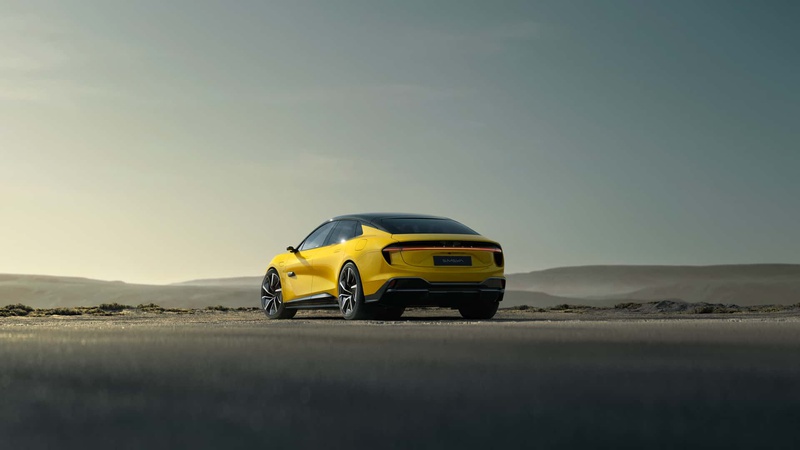
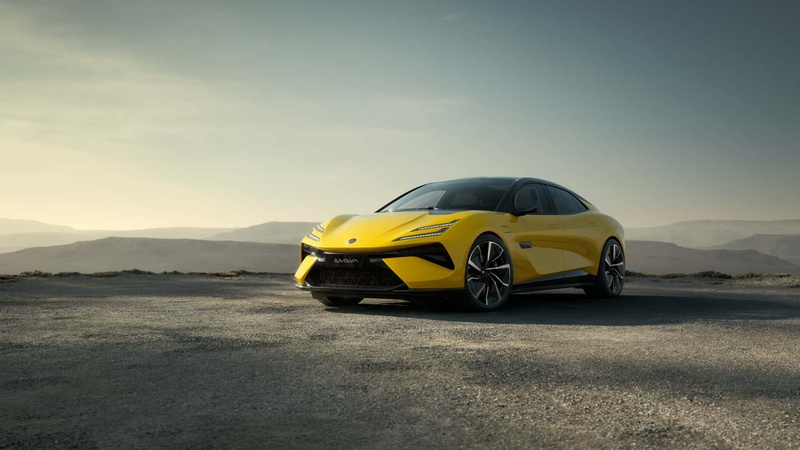

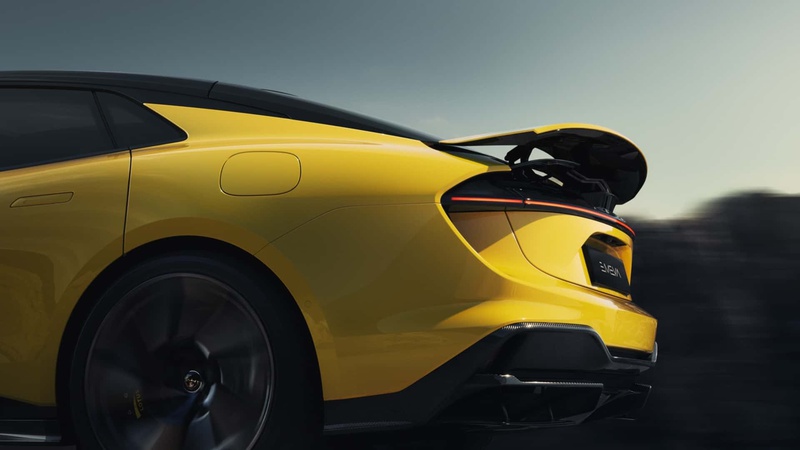
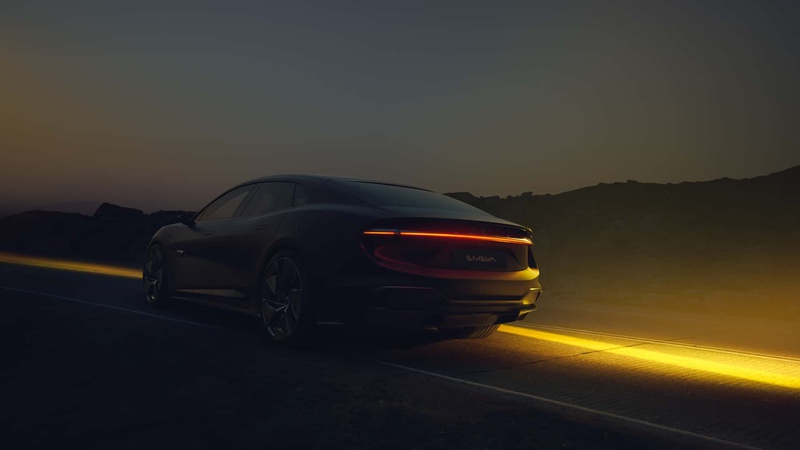
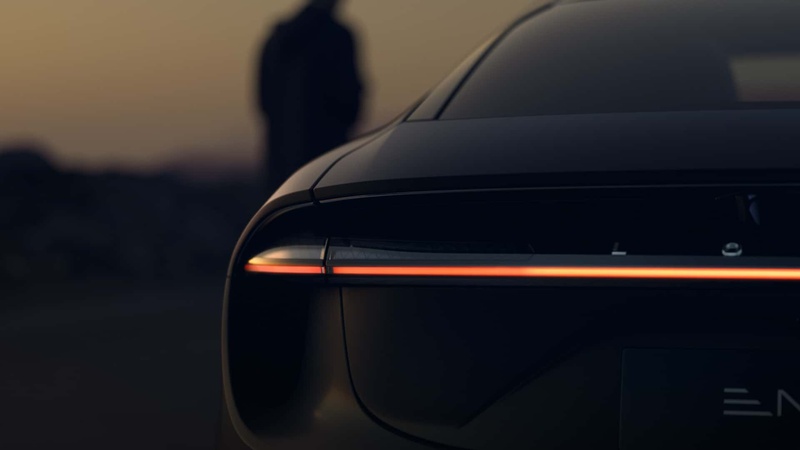
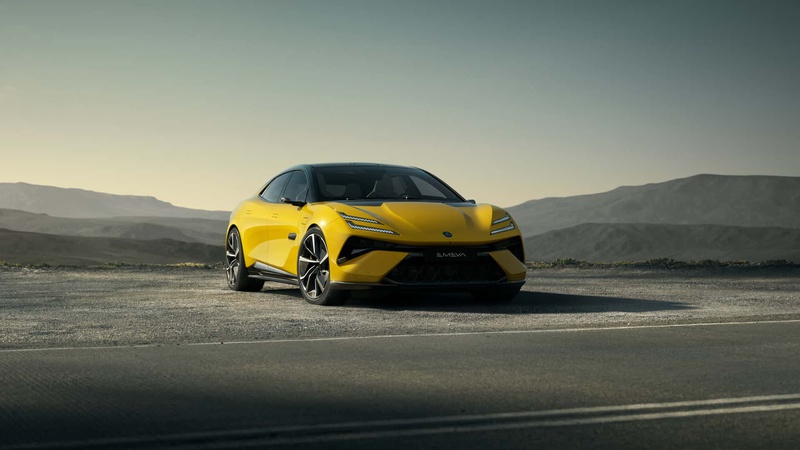
Lotus Emeya
Metallic accents inside the cabin receive physical vapor deposition (PVD) treatment, and you'll also find Alcantara, high-grade polyurethane fabric, and Nappa leather as finish options.
The interior has more than just eco-friendly materials. It features a KEF 3D audio system that incorporates noise-cancellation technology; external vibration sensors monitor tire and suspension activity. These sensors help produce "anti-phasing acoustic signals" through the speakers to minimize sound disruption. For the driver, a 55-inch augmented reality heads-up display is present, along with digital mirrors and LiDar modules similar to those in the Eletre.
Built on the bespoke Electric Premium Architecture (EPA), which is an offshoot of Geely’s Sustainable Experience Architecture (SEA), the Emeya is anticipated to offer a driving range similar to the Eletre—about 373 miles (600 km) according to WLTP standards. Its 102 kWh battery pack, slightly smaller than the Eletre’s 112 kWh unit, supports 350 kW fast-charging, adding 93 miles (150 km) of range in just five minutes. Charging from 10-80% takes 18 minutes with a 350 kW DC fast charger.
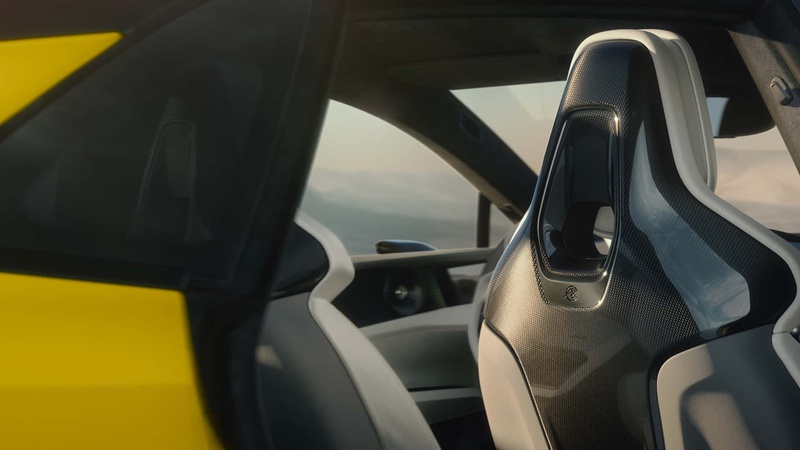




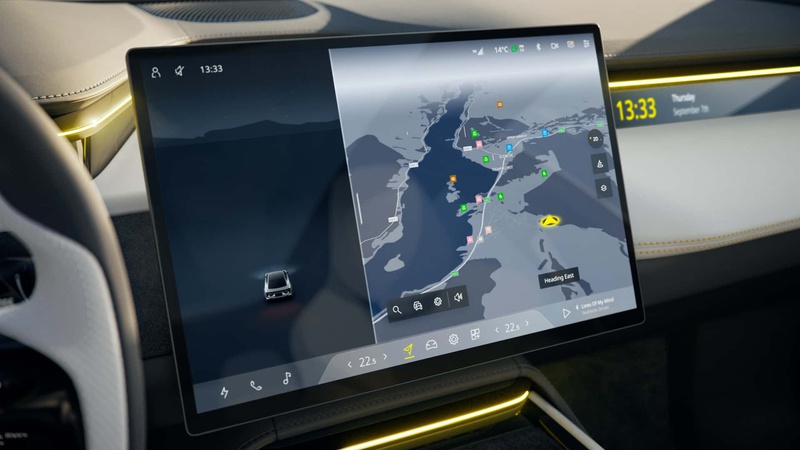
Lotus Emeya
The Emeya boasts hypercar-like performance stats. Its 905 horsepower and 726 pound-feet (985 Nm) of torque enable a 0-62 mph (0-100 km/h) acceleration time of only 2.8 seconds. The electric vehicle's top speed caps at 159 mph (255 km/h), and it employs a two-speed gearbox to distribute power to all wheels. Lotus says the brakes are of "race-grade" quality, and the adaptable suspension system scans the road surface 1,000 times per second.
Additional specifics about the Emeya will be disclosed in Q4 2023, with manufacturing set to commence in 2024 at the Geely-owned Wuhan plant in China, where the Eletre is already being made. The Emeya is expected to reach U.S. shores by the fourth quarter of 2024,
